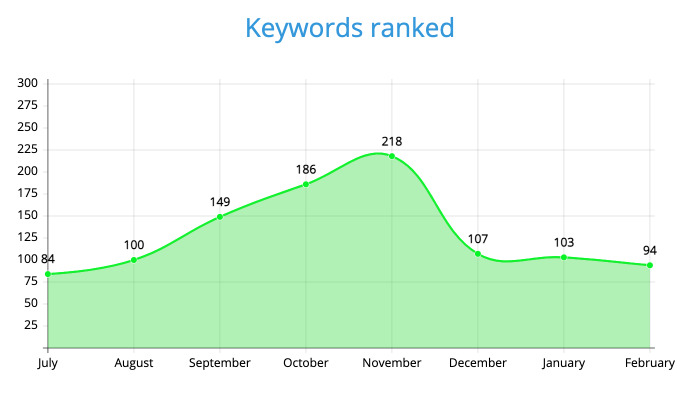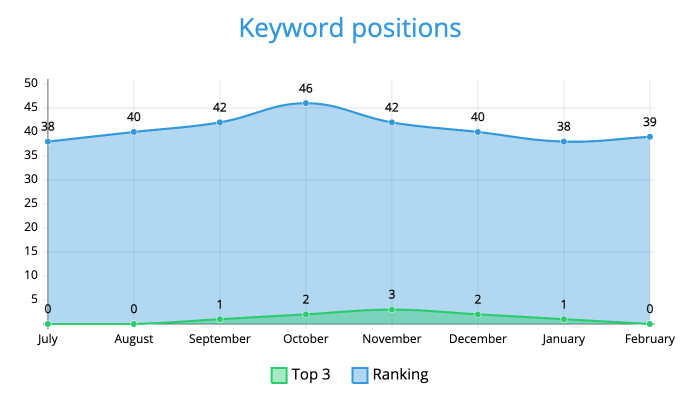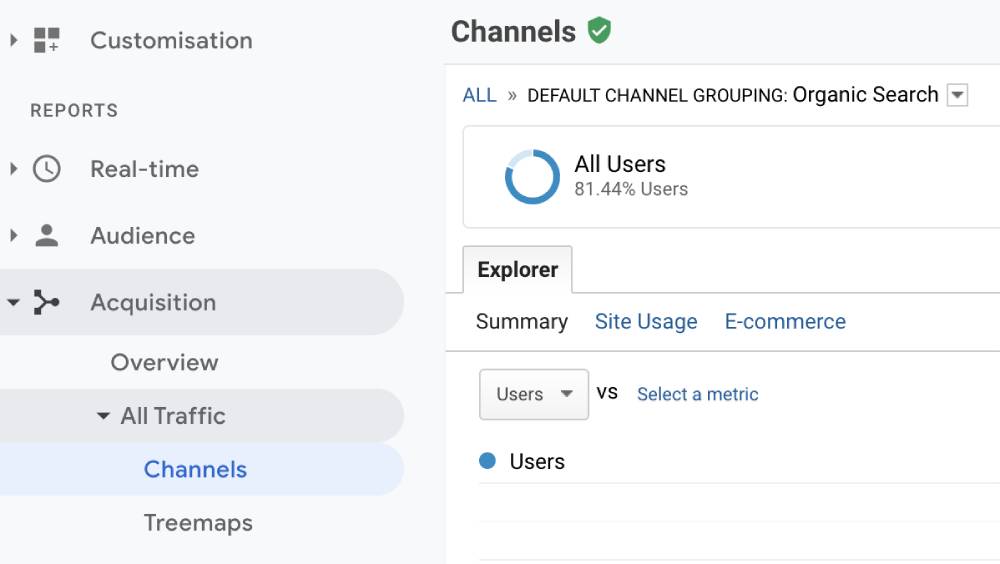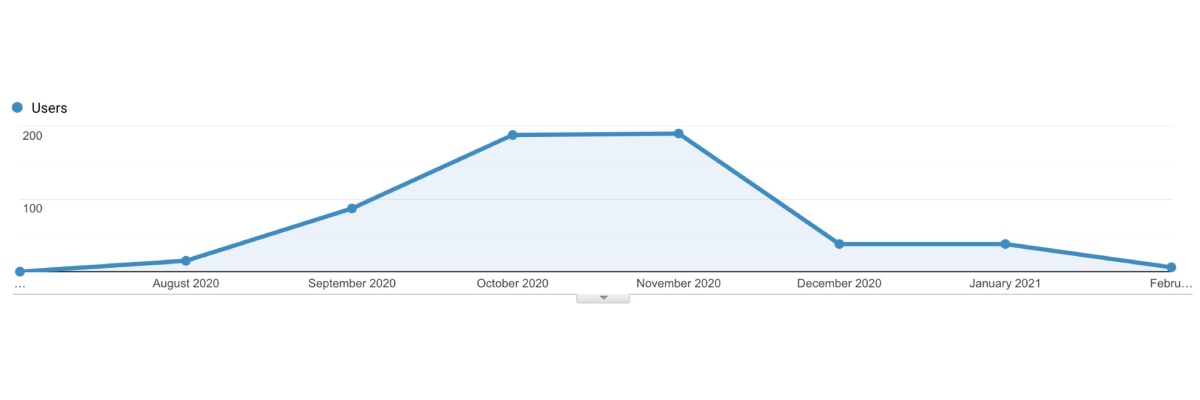There’s been lots of research when it comes to blog content and niche content websites and how to improve their SEO. We know, for example, that URL structure, website speed, regularly updating content, all of this is very important for search engine optimisation. We also know that multiple studies have shown that longer form articles tend to do better than short ones.
Why is that? Put simply, the more words, the more combinations of long tail keywords, right?
However, before you go crazy and start increasing all of those 1,200 word blog posts to 3,000 words, full of fluff and filler, remember though that humans need to also read them. I’m going to quickly lose interest if every paragraph has been fleshed out for every possible character count.
Please don’t just write for length. Make sure every blog post you publish has real value. This blog content experiment has not been put together as an excuse to start writing hundreds of words for the purpose of increasing your word count only.
In August last year I decided to start a little experiment. It took around six months to completely measure the results. Given that I have since sold this website we’ll be discussing, I feel like I can now share the experiment outcomes in. full.
Blog content experiment explained
I had a website which I had built up over the previous 18 months. It was purely content, most of it very general in nature, and across a wide range of ‘home and living’ topics. I created the website because 18 months prior, I had seen that the domain name was expiring, and it had a few keywords that it already ranked for, so there were some existing SEO benefits.
Yes, the domain name was ranking for a few keywords. However, it also had a reasonably low domain rating and similar SEO metrics, so I felt that with some consistent effort on my part, I could really improve the site. Turns out, I didn’t have as much time as I had hoped, so it really didn’t get a lot of attention and love.
In mid August 2020, when I undertook the work, this content site contained 31 articles, that equalled 22,931 words. That’s an average of 739 words per article. The article lengths varied of course, however the shortest article was 601 words, and the longest article was only 1,150 words.
Over the course of a weekend in the middle of August 2020, I wrote and published a further 9 articles, which contained 10,927 words. The shortest was 854 words, and the longest was 1,928. This means that the articles averaged 1,214 words in length, a significant increase over the older articles.
That’s all the changes I did. Nothing more. No speed improvements, no link building, I didn’t even mention it on social media or anywhere else. I added those new articles, and then I purposefully left it alone. I didn’t even log in to the WordPress admin area for months.
The only variable in all of this was the extra articles, taking the site from 31 to 40 posts (or 22,931 to 33,858 words of content) in one single weekend.
So the blog content experiment I am undertaking here is will there be any SEO advantage to adding more content? Specifically, the value if we measure the total keywords being ranked, average rankings and the ranking changes over time.
So I set out and started used my standard SEO tool, Ahrefs, to keep an eye on the search engine rankings of this website for the following six months.
Want to know what happened? Let me break it down. Drum roll please…

Keywords ranked
Still with me? Great! So here is the data showing the keywords this website ranked for, in the first 100 results (10 pages) of Google.
Here’s the raw data of the results for this content blog experiment. You can see the numbers yourself in the below table.
| Jul 20 | Aug 20 | Sep 20 | Oct 20 | Nov 20 | Dec 20 | Jan 21 | Feb 21 | |
|---|---|---|---|---|---|---|---|---|
| Keywords (US) | 61 | 74 | 107 | 138 | 148 | 84 | 81 | 77 |
| Keywords (AU) | 2 | 6 | 7 | 10 | 11 | 5 | 3 | 3 |
| Keywords (UK) | 2 | 1 | 5 | 8 | 8 | 5 | 2 | 1 |
| Keywords (Other) | 19 | 19 | 30 | 30 | 51 | 18 | 17 | 13 |
| Keywords (Total) | 84 | 100 | 149 | 186 | 218 | 107 | 103 | 94 |
The above table shows the keywords ranking per country, being the US, Australia and United Kingdom, then Other, which was the rest of the world which counted for 8-12 other countries.
If you’re like me, you’ll find a visual is far easier to grasp. Here’s a chart reflecting the same data as above. I started tracking the keywords a month before the change, so in July 2020, and stopped measuring it all in February 2021, six months after the content additions.

Now, remember all I did was add more articles. They weren’t in any way more keyword rich or SEO optimised blog posts than the articles already there. I didn’t touch the existing content in any way, and I didn’t do any changes at all to the codebase. In fact, I believe I even left any WordPress plugins, etc exactly the same versions as they were.
What this graph shows is that roughly three months after the new content was added, the amount of keywords ranking in the first 100 positions had gone from 84 to a whopping 218. That’s a hefty increase, and fantastic to see.
Given nothing else changed from that weekend, the graph then inevitably shows the ranking start to fall. From that height of 218 phrases in month three, down to 94 phrases three months after that, six months after the content addition.
Keyword positions
This is an idea of where these same keywords that are ranking actually placed in results. These are the average positions, and the green shows those keywords in the coveted top 3 positions.
Given the new keywords coming in, which take time to move up positions, it’s not entirely unexpected that the average would actually be worse off, as the volume of total keywords in the first 100 results grow.

Sadly, the site barely made an impact in the top 3 spots at all. This is that old ‘effort in, rewards out’ rule. I barely put much effort in to this content blog, so hence I couldn’t expect much in the way of results.
If I really wanted results, and I had more time and energy to put the effort in, I’d know that posting content regularly is an absolute must. Leaving the site for 6 months, then posting 9 articles in one weekend, and then leaving it for a further six months is not the way to build a successfully growing blog or website.
Traffic from Google
Now it’s all fair and dandy having your keywords ranking on search engines, however if they’re useless keywords with hardly anyone searching for, or even clicking on them, then what’s the point in celebrating any ranking success? The objective of any SEO work should be down to the amount of visitors that Google can send to this website as a result.
Lucky for us, Google Analytics allows you to view by various channels, and referrers. This can be found by navigating to Channels, which is under All Traffic within the Acquisition sub menu, as shown below.

The telling result in all of this, is the Organic search referrals. We had pretty good success with the total amount of keywords we started ranking for in the 2-3 months after the content addition, but we didn’t get much movement into the first page for those terms. Will these results reflect at all in the amount of visitors that Google sent this content blog?
This chart from Google Analytics explains it better than I can.

Remember, this chart is only showing traffic to the website from Google. This is not any other channels (which, as an aside, were very minimal anyway). The month I added the content, the traffic from search engine rankings was minimal, if at all. This grew over September and October, and hit the peak three months after the content was added, at more than a 450% increase in monthly visitors.
Then, it reflects very similar to the rankings charts above, in dropping after month three, and then further losses in months four and five.
In Summary
Looking at the statistics, the big thing that I see in this whole content blog experiment is that new content can really stimulate new search engine rankings, and improve existing rankings. However, in order to really get value, you need to be regularly adding content. Not just a once-off weekend addition like I did.
As I have found in other blogs I have managed, the more regular, and the more quality the articles, the better the results. Add the process of updating existing posts (and at time, even deleting old posts), and you are on to a surefire winning blogging process.
A disclaimer here; Google is constantly changing their algorithms, and tweaking what ranks better than others. This means that in reality, these outcomes may have been affected by more than the addition of the nine articles. I can’t rule out changes in how the site would have ranked naturally had I not made those article additions.
As any SEO person will tell you, your search engine rankings will fluctuate constantly, however typically only by a small percentage. When it does yo-yo or bounce in a significant level, that’s when we need to start looking at further reasons behind the changes.









This is a great read Miles, thanyou for sharing your experiment. A timley reminder of reward for effort, though i do think that there is some small shortcuts that provide almost instant uplift.